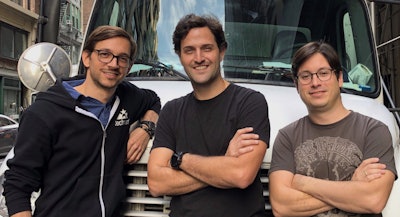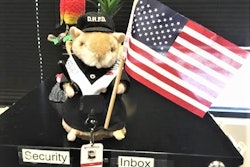SmartHop cofounder and CEO Guillermo Garcia relocated to the United States after some years trucking and in related businesses in Venezuela, attending a university program in New York that got him thinking about building a trucking company in the United States. Specifically, in Miami, Florida.
“Nobody told me that wasn’t a good idea,” Garcia said. He would ultimately learn “the hard way,” he said, the old maxim about South Florida and the trucking business. “I was that guy with two trucks trying to make my company successful,” and he wasn’t alone. Along the way he saw all manner of his peers in small trucking from his own and other areas similarly struggling to bring in adequate rates to offset ever-higher costs for insurance, for fuel and more. First motivated by his own trucking company’s difficulty, the idea behind SmartHop was born. His and partners’ new tech-enabled dispatch platform is now available for dry van and reefer long-haul owner-operators and small fleets.
It fundamentally seeks to be an outsourced back office for the smallest of carriers, with dispatch and other functionality partially automated through its technology platform.
 From left, SmartHop cofounders Joaquin Brillembourg (COO), Guillermo Garcia (CEO), and Miguel Sucre (CTO)
From left, SmartHop cofounders Joaquin Brillembourg (COO), Guillermo Garcia (CEO), and Miguel Sucre (CTO)Currently, “what we give [owner-operators] is easy load booking,” Garcia said, “with end-to-end back-up support” at the 5% per booking price point with access to support staff with the company, tools to track and analyze profits, and more. (A baseline 3% transaction fee applies at the most basic service level.) Garcia called the company’s model a “business in a box,” of a fashion, that owner-operators can utilize to help keep their focus on maintenance and driving. “We take care of the rest,” Garcia said.
The company has bagged more than $4 million in seed funding from investors, and it is now looking to scale the operation as much as it can by attracting both carriers and brokers to the platform. The system is partially automated for carriers to suggest loads in advance to assist in planning, that kind of “predictive matching” based on carrier preference and location that others in the technology space are doing more and more of, from traditional load board players to new broker-carrier connection engines and digital brokers themselves.
Garcia sounds a little different from many, though, given his emphasis on serving the carrier in the equation above all else. “We’re not a marketplace, and we’re not a broker,” he says. Currently with 100 trucks on the platform, for the brokers posting loads through it, “we’re a new kind of trucking company,” he said, with a level of capacity that is definable and visible to all of them. As such, he said, SmartHop hopes to be an effective partner to carriers long-term by attracting more freight that pays rates above market averages and by using technology to help owner-operators within the platform make the right decisions for the best efficiency, and at good rates.
“We have automated as much as we can,” he said, such as “check calls to back-office invoicing. The company asks for individual drivers’ and carriers’ preferences in the system to present them with the best loads available. “But this is an industry that needs the right combination of analog and digital,” Garcia said. “Truckers need access to people over the phone, too, when they’re booking and executing a load. We partner with brokers as a trucking company – we allocate our capacity based on the opportunities that are there, like the leading carriers do. It’s a big difference from the tools that are out there today.”
In some ways, that sounds akin to the attraction for some owner-operators of leasing on with a fleet to take advantage of a strong freight pool and a dispatch assist — Garcia also hopes to be able to leverage the size of the customer base to offer fuel and other discount buying in the manner of a fleet’s national account or a business association like OOIDA or the National Association of Small Trucking Companies.
But the SmartHop technology also preserves a level of independent decision-making sometimes lost by leased operators and fleets when it comes to freight, routes and more.
For the carriers using the platform today since its soft launch in February, they’re all using it for 100 percent of their business, said Garcia, but that’s by no means a requirement of carriers who want to try it out. “For those who have their own connections — they might have an outbound customer where they’re based that we’re not connected with — we don’t want to restrict them. We can understand if that’s a good decision. We want them to be successful, we want them to thrive.”
When the broader freight market took a dive in April, he saw owner-operators move to shorter-haul freight in many instances, assisting by recommendations coming through the SmartHop platform — one way to attempt to counteract the plunge in longer-haul rates. The system is set up such that it strives to outperform market averages when it comes to rates. “Consistently, even through the worst of COVID” when it comes to the freight market, Garcia said, “we’ve been over-performing the market,” benchmarked via sources like Freightwaves Sonar data and DAT’s spot data.
Long-term, he added, “our tech is able to expand” to encompass more than just dry van and reefer, “but for now, we have a lot to prove and to do before we expand.”











